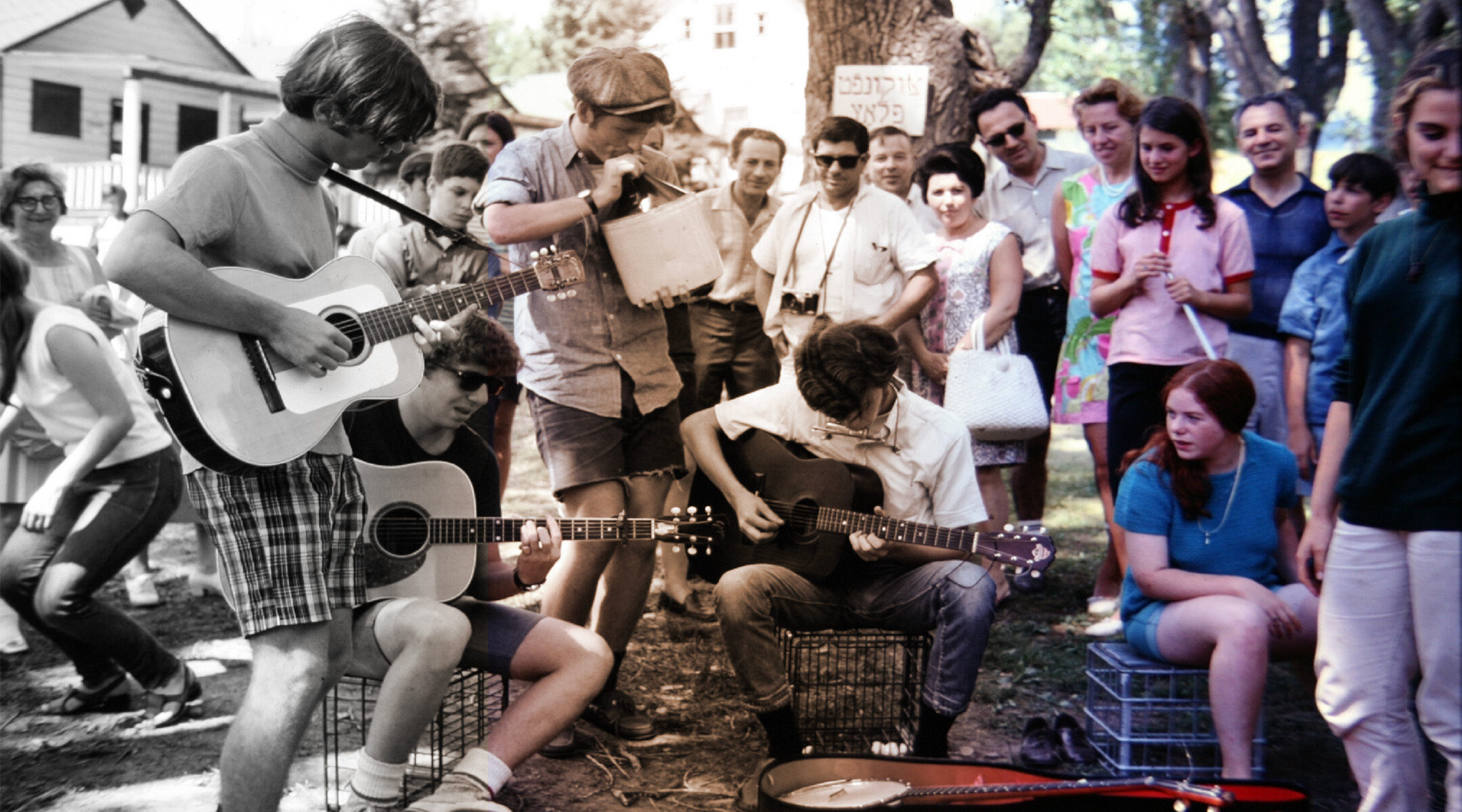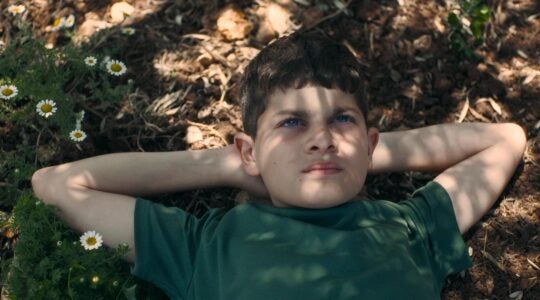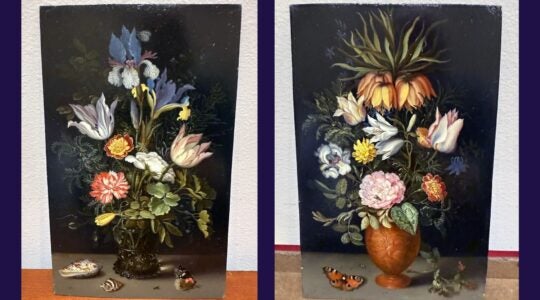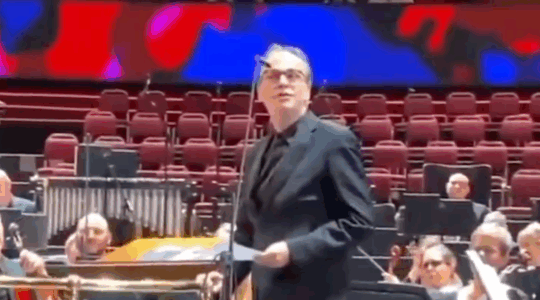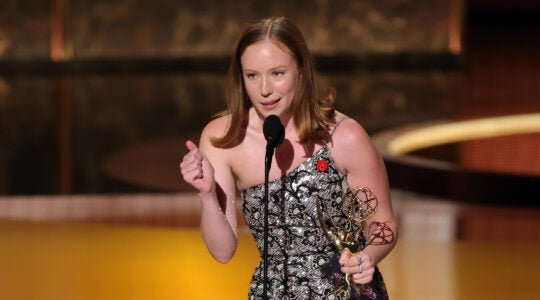(JTA) — Among Sandra Fox’s most memorable finds during her years mining American archives for materials about Jewish summer camps was a series of letters about the hours before lights-out.
The letters were by counselors who were documenting an unusual window in the day when they stopped supervising campers, leaving the teens instead to their own devices, which sometimes included romance and sexual exploration.
“It was each division talking about how they dealt with that free time before bed in ‘age-appropriate ways,’” Fox recalled about the letters written by counselors at Camp Ramah in Wisconsin, the original iteration of the Conservative movement’s network of summer camps.
“I’ve spoken to Christian people who work at Christian camps and have researched Christian camps. There is no free time before bed,” Fox told the Jewish Telegraphic Agency. “That’s not a thing if you don’t want kids to hook up. So it was just amazing to find these documents of Camp Ramah leaders really having the conversation explicitly. Most of the romance and sexuality stuff is implicit in the archives.”
The letters are quoted extensively in Fox’s new book, “The Jews of Summer: Summer Camp and Jewish Culture in Postwar America.” Fox, who earned a PhD in history from New York University in 2018 and now teaches and directs the Archive of the American Jewish Left there, tells the story of American Judaism’s most immersive laboratory for constructing identity and contesting values.
Next week, Fox is launching the book with an event at Congregation Beth Elohim in Park Slope, Brooklyn. (Tickets for the Feb. 23 event are available here.) Attendees will be able to tour adult versions of some of the most durable elements of Jewish summer camps, from Israeli dance to Yiddish and Hebrew instruction to Color Wars to Tisha B’Av, the mournful holiday that always falls over the summer.
“I never considered doing a normal book party,” Fox said. “It was always really obvious to me that a book about experiential Jewish education and role play should be celebrated and launched out into the world through experiential education and role play.”
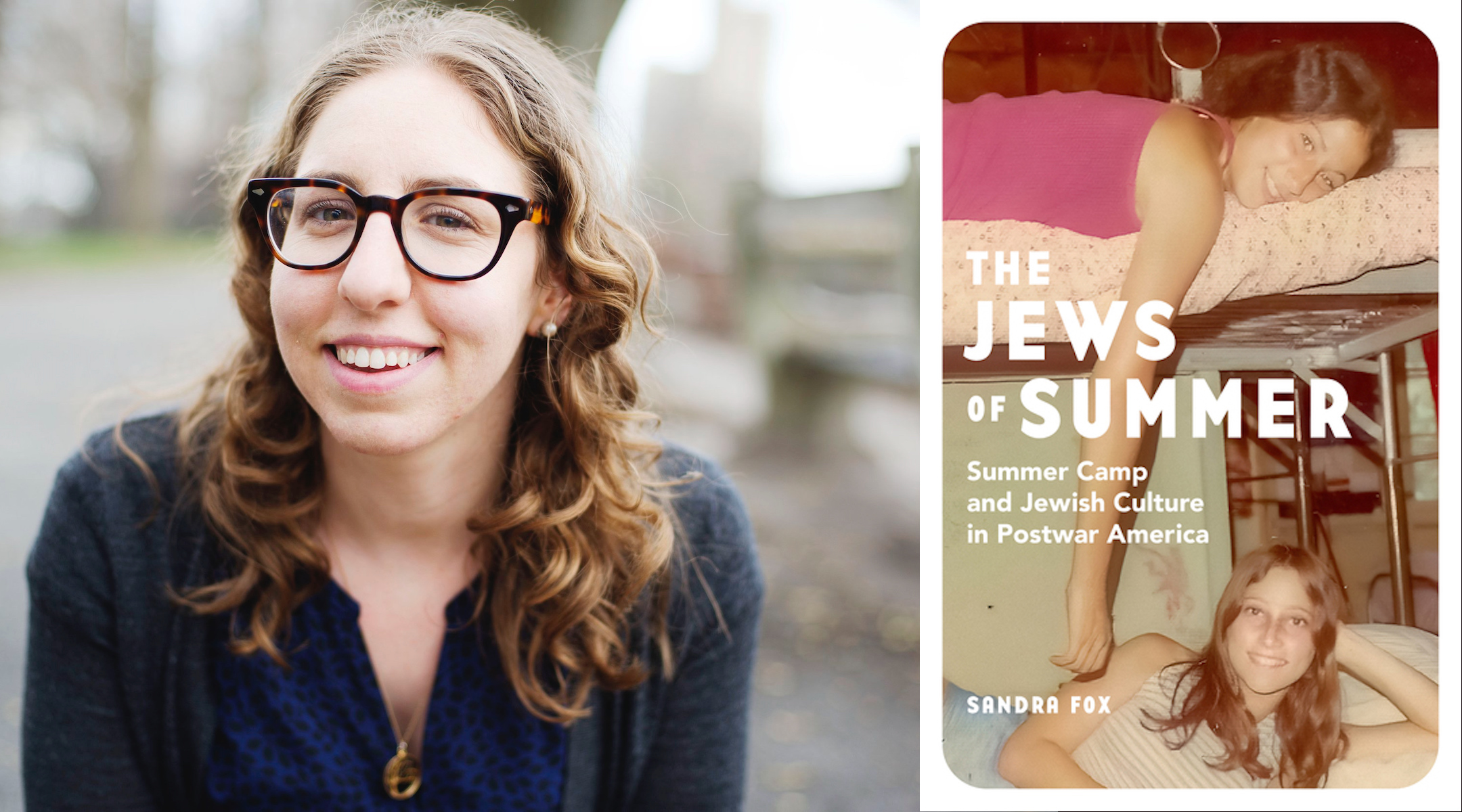
Sandra Fox’s 2023 book “The Jews of Summer,” looks at the history of American Jewish summer camps. (Courtesy of Fox)
We spoke to Fox about her party plans, how Jewish summer camps have changed over time and how they’ve stayed the same, and the cultural history of that before-bed free time.
This interview has been condensed and lightly edited for clarity. We’ll be continuing the conversation in a virtual chat through the YIVO Institute for Jewish Research Feb. 27 at 1 p.m.; register here.
Jewish Telegraphic Agency: Given how much Jews like to talk about camp, were you surprised that this book hadn’t already been written?
Sandra Fox: There’s been a lot of fruitful research on the history of various camps, but it’s usually been focused on one camping movement or one camp type. So there are articles about Zionist camps. There are certainly articles out there about the Ramah camps. A lot of camps have produced books — either their alumni associations or a scholar who went to let’s say, Reform movement camps have created essay collections about those camps. And there are also books about Habonim and other Zionist youth movements.
I don’t really know why this is the first stab at this kind of cross-comparison. It might be that people didn’t think there would be so much to compare. I think the overwhelming feeling I get from readers so far, people who preordered and gotten their books early, is that they’re very surprised to hear how similar these camps are. So perhaps it’s that scholars weren’t thinking about Jewish summer camps that came from such diverse standpoints as having something enough in common to write about them all at once.
Also distance from the time period really helps. You can write a book about — and people do write a book about — the ’60s and ’70s and have been for decades, but there’s a certain amount of distance from the period that has allowed me to do this, I think, and maybe it also helps that I’m generationally removed. A lot of the scholars who’ve worked on camps in the postwar period went to camps in the postwar period. It makes a lot of sense that it would be harder to write this sort of sweeping thing perhaps. The fact that I’m a millennial meant that I could write about the postwar period — and also write kind of an epilogue-style chapter that catches us up to the present.
What’s clear is that there’s something amazing about studying summer camp, a completely immersive 24/7 experience that parents send children away for. There’s no better setting for thinking about how adults project their anxieties and desires about the future onto children. There’s also no place better to think about power dynamics and age and generational tension.
I was definitely struck by the “sameyness” of Jewish camps in your accounting. What do you think we can learn from that, either about camps or about us as Jews?
I do want to say that while there’s a lot of sameyness, whenever you do a comparative study, there’s a risk of kind of collapsing all these things and making them seem too similar. What I’m trying to convey is that the camp leaders from a variety of movements took the basic structure of the summer camp as we know it — its daily schedule, its environment, its activities — and it did look similar from camp to camp, at least on that surface level.
If you look at the daily schedules in comparison, they might have a lot of the same features but they’ll be called slightly different things depending on if the camp leans more heavily towards Hebrew, or Yiddish, or English. But the content within those schedules would be rather different. It’s more that the skeletal structure of camp life has a lot of similarities across the board and then the details within each section of the day or the month had a lot of differences.
But I think what it says is that in the postwar period, the anxieties that Jewish leaders had about the future of Judaism are really, really similar and the solution that they found within the summer camp, they were pretty unanimous about. They just then took the model and inserted within it their particular nationalistic, linguistic or religious perspectives. So I think more so than saying anything about American Jewry, it shows kind of how flexible camping is. And that’s not just the Jewish story. Lots of different Americans have embraced summer camping in different ways.
So many people who have gone to camp have a fixed memory of what camp is like, where it’s caught in time, but you argue that camps have actually undergone lots of change. What are the most striking changes you documented, perhaps ones that might have been hard for even insiders to discern as they happened?
First of all, the Israel-centeredness of American Jewish education as we know it today didn’t happen overnight in 1948, for instance. It was a slower process, beyond the Zionist movements where that was already going on, for decades before 1948. Ramah and the Reform camps for instance took their time towards getting to the heavily Zionist-imbued curricula that we know.
There was considerable confusion and ambivalence at first about what to do with Israel: whether to raise an Israeli flag, not because they were anti-Zionist, but because American Jews had been thinking about proving their loyalty to America for many generations. There were some sources that would talk about — what kind of right do American Jews have to raise the Israeli flag when they’re not Israeli? So that kind of Israel-centeredness that is really a feature of camp life today was a slower process than we might think.
It fit camp life really well because broader American camps used Native American symbols, in some ways that are problematic today, to create what we know of as an iconography of camp life. So for Jews, Israel and its iconography, or Palestine and iconography before ’48, provided an alternative set of options that were read as Jewish, but it still took some time to get to where we are now in terms of the Israel focus.
One of the reasons I place emphasis on the Yiddish summer camps is to show that in the early 20th century and the mid-20th century there was more ideological diversity in the Jewish camping sphere, including various forms of Yiddishist groups and socialist groups and communist groups that operated summer camps. Most of them have closed, and their decline is obviously a change that tells a story of how American Jewry changed over the course of the postwar period. Their legacy is important, too: I have made the argument that these camps in a lot of ways modeled the idea of Yiddish as having a future in America.
What about hookup culture? Contemporary discourse about Jewish camps have focused on sex and sexuality there. What did you observe about this in the archives?
I think people think of the hookup culture of Jewish camps today and certainly in my time in the ’90s and 2000s as a permanent feature, and in some ways I found through my research and oral history interviews that that was the case, but it was really interesting to zoom out a little bit and think about how Jewish summer camps changed in terms of sexual romantic culture, in relationship to how America changed with the sexual revolution and the youth culture.
It’s not useful to think about Jewish hookup culture in a vacuum. It’s happening within America more broadly. And so of course, it’s changed dramatically over time. And one of the things I learned that was so fascinating is that Jewish summer camps were actually their leaders were less concerned in a lot of ways about sexuality at camp in the ’40s and ’50s, than they were in the late ’60s and ’70s. Because earlier premarital sex was pretty rare, at least in the teenage years, so they were not that concerned about what happened after lights out because they kind of assumed whatever was going on was fairly innocent.
In the late 1960s and 1970s, that’s when camps have to actually think about how to balance allowance and control. They want to allow campers to have these relationships, to have their first sexual experiences, and part of that is related to rising rates of intermarriage and wanting to encourage love between Jews, but they also want to control it because there’s a broader societal moment in which the sexuality of teenagers is problematized and their and their sexual culture is more public.
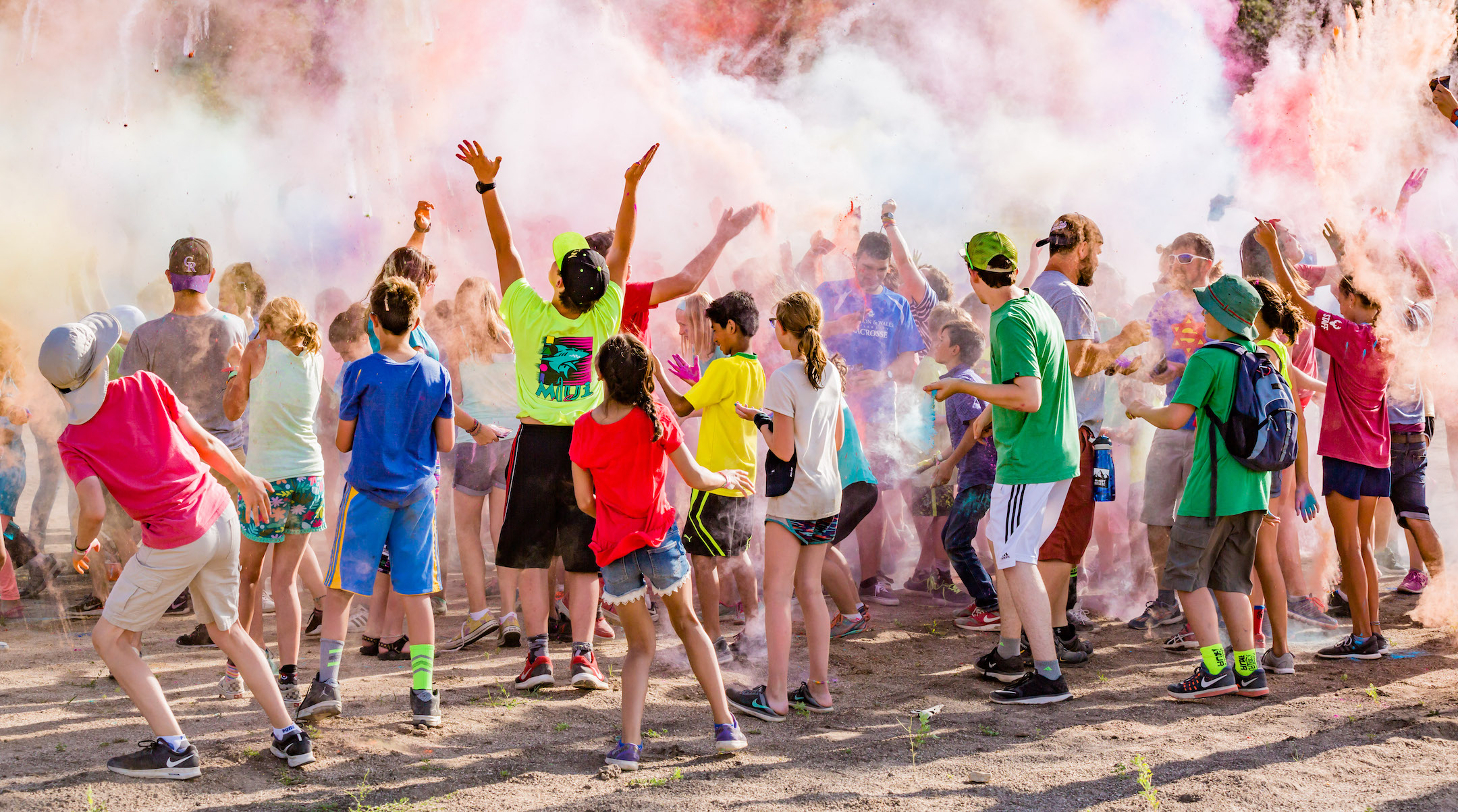
The 2017 color war at JCC Ranch Camp in Elbert, Colorado. (Noah Gallagher)
There’s been a real wave of sustained criticism by former campers about the cultures that they experienced, arguing that the camps created an inappropriately sexualized and unsafe space. There’s been a lot of reaction to that and the broader #MeToo moment. I’m curious about what you can speculate about a future where that space is cleaned up, based on your historical research — what is gained and what, potentially, could be lost?
Without being involved in camping today — and I want to really make that disclaimer because I know a lot of change is happening and lot of organizations are involved to talk about this issue better, to train camps and camp leaders and their counselors to not create a pressured environment for camper — I think what the history shows is that this hookup culture did not come about out of nowhere. It was partly related to the broader changes in America and the sexual revolution.
But it was also partly created because camps really needed to have campers’ buy-in, in order to be “successful.” A huge argument of my book is that we think about the power of camps as if camp directors have campers as, like, puppets on strings, and that what they do is what happens in camp life. But actually, campers have changed the everyday texture of life at camp over the course of the decades in so many different ways by resisting various ideas or just not being interested.
So hookup culture is also part of making campers feel like they have freedom at camp and that’s essential. That’s not a side project — that is essential to their ability to get campers to come back. It’s a financial need, and it’s an ideological need. If you make campers feel like they have freedom, then they will feel like they freely took on the ideologies your camp is promoting in a really natural way.
The last part of it is rising rates of intermarriage. As rates of intermarriage rose in the second half of the 20th century, there’s no doubt in my mind from doing the research that the preexisting culture around sexuality at camp and romance at camp got turbo-boosted [to facilitate relationships that could potentially lead to marriage between two Jews]. At that point, the allowance and control that camp leaders were trying to create for many decades leans maybe more heavily towards allowance.
There are positives to camp environments being a place where campers can explore their sexualities. There’s definitely a lot of conversation about the negative effects and those are all very, very real. I know people who went through horrible things at a camp and I also know people who experienced it as a very sex-positive atmosphere. I know people in my age range who were able to discover that they were gay or lesbian at camp in safety in comparison to home, so it’s not black and white at all. I hope that my chapter on romance and sexuality can maybe add some historical nuance to the conversation and give people a sense of how this actually happened. Because it happened for a whole bunch of reasons.
I think there’s a consensus view that camp is one of the most “successful” things the Jews do. But it’s hard to see where lessons from camp or camp culture are being imported to the rest of Jewish life. I’m curious what you see as kind of the lessons that Jewish institutions or Jewish communities have taken from camp — or have they not done that?
Every single public engagement I do about my work has boiled down to the question of, well, does it work? Does camp work? Is it successful? And that’s been a question that a lot of social scientists have been interested in. I don’t want to oversimplify that research, but a lot of the ways that they’ve measured success have been things that are not necessarily a given to all Jews as obviously the right way to be a Jew. So, for instance, in the ’90s and early 2000s, at the very least, a lot of research was about how, you know, “XYZ” camp and youth movement were successfully curbing intermarriage. A lot of them also asked campers and former campers how they feel about Israel, and it’s always if they are supportive of Israel in very normative ways, right, giving money visiting, supporting Israel or lobbying for its behalf — then camps have been successful.
I’m not interested in whether camps were successful by those metrics. I’m interested in how we got to the idea that camp should be successful in those ways in the first place. How did we get to those kinds of normative assumptions of like, this is a good Jew; a good Jew marries a Jew; a good Jew supports Israel, no matter what. So what I wanted to do is zoom out from that question of success and show how camp actually functions.
And then the question of “does it work” is really up to the reader. To people who believe that curbing intermarriage is the most important thing, then camps have been somewhat successful in the sense that people who go to these heavily educational camps are less likely to marry out of the faith.
But I am more interested in what actually happened at camp. And in terms of their legacies, I wanted to show how they changed various aspects of American Jewish life, and religion and politics. So I was really able to find how camping was essential in making kind of an Israel-centered Jewish education the norm. I was also able to draw a line between these Yiddish camps over the ’60s and ’70s that closed in the ’80s and contemporary Yiddish. The question of success is a real tricky and political one in a way that a lot of people have not talked about.
And is camp also fun? Because you’re creating a camp experience for your book launch next week.
Camp is fun — for a lot of people. Camp was not fun for everyone. And so I do want to play with that ambivalence at the party, and acknowledge that and also acknowledge that some people loved camp when they were younger and have mixed feelings about it now.
The party is not really a celebration of Jewish summer camp. People will be drinking and having fun and dancing — but I want them to be thinking while also about what is going on and why. How is Tisha B’Av [the fast day that commemorates the destruction of the ancient Jewish temple in Jerusalem that falls at the height of summer] commemorated at camp, for example?
Or what songs are we singing and what do they mean? I think a lot of people when they’re little kids, they learn songs in these Jewish summer camps that they can’t understand and later they maybe learn Hebrew and go, whoa, we were singing what?! My example from Zionist summer camp is singing “Ein Li Eretz Acheret,” or “I Have No Other Country.” We were in America and we obviously have another country! I don’t think anyone in my youth movement actually believes the words “Ein Li Eretz Acheret” because we live in America and people tend to kind of like living in America and most of them do not move to Israel.
So at the party we’ll be working through the fun of it, and at the same time the confusion of it and the ambivalence of it. I want it to be fun, and I also want it to be something that causes people to think.
JTA has documented Jewish history in real-time for over a century. Keep our journalism strong by joining us in supporting independent, award-winning reporting.
